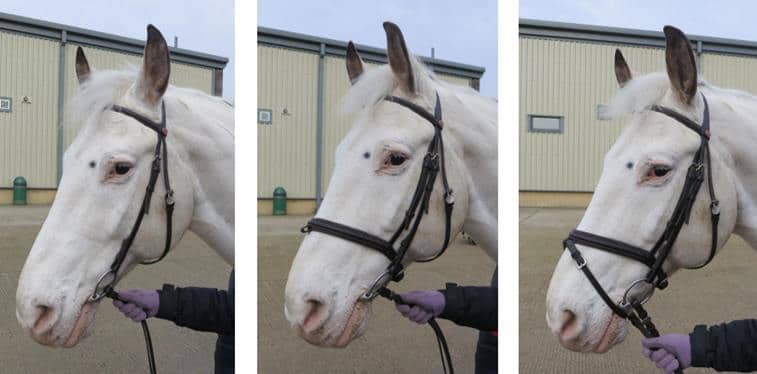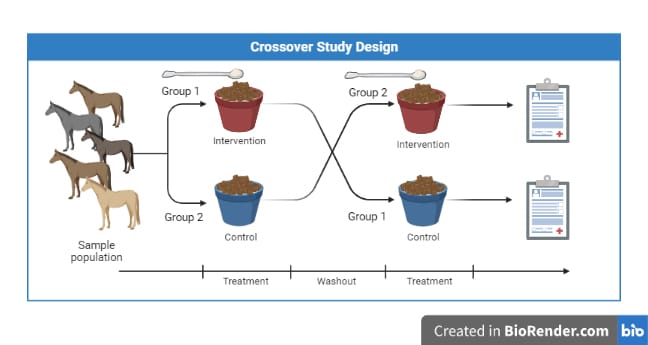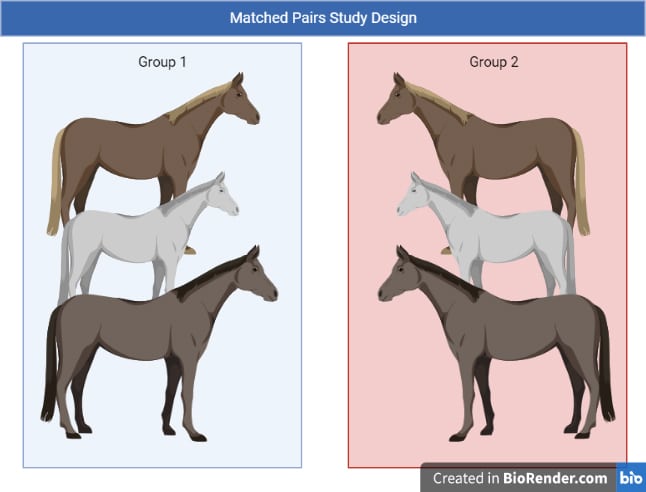With the internet and social media, it is easier than ever to get your hands on articles, blogs and webinars about horse riding and management. However, not all information is equal!
The best information comes from primary scientific research; this is the outcome of controlled experiments to test new ideas. It can be quite daunting to consider reading some of this research, and people usually turn to other sources of information, which are often not evidence-based. This can lead to the spread of misinformation, which can be detrimental to the welfare of the horse, the very thing we are trying to avoid.
This series aims to help those involved with managing horses to understand and interpret some of the intervention research available, and to be more confident about using it to make informed decisions. Here we use the word intervention to mean something that has been changed; for example, a different piece of tack or equipment, a training method, or a feed supplement. This is one of the most common study types that you will come across, and they are relatively easy to interpret once you are familiar with them.
Here we will be discussing the basic principles of how these research studies are designed.
Part 1: How are intervention-based research studies designed?
Most studies of this type will consider the impact of an intervention on one or more outcome measures. These are the things that we expect the intervention to have an effect on. This could be physiological measures like heart rate or temperature, biomechanical measures such as stride length or joint angles, or behavioural measures like number of incidences of a certain behaviour.
It is important that we take a measure of each of our outcome variables without any intervention, so that it is clear what is normal for that horse; this is known as a control condition. In some cases, it isn’t possible to do a ‘no intervention’ condition, so we just make sure we have something to compare to what is considered normal for that horse.
For example, if we are looking at horse biomechanics with a new saddle design, we would compare this to the horse in their existing saddle, as this would be a fairer comparison than a ‘no saddle’ condition. These two scenarios are referred to as negative control and positive control. In a negative control study we compare an intervention to a ‘no intervention’ scenario and in a positive control study we compare an intervention to the current method that is normal for the horse.

When testing the effects of noseband design on horse behaviour the intervention (flash noseband, far right), was compared to both a negative control (no noseband, far left) and the horse’s current noseband as a positive control (cavesson noseband, centre).
Because horses are all so different from each other, it is best to compare them to themselves in each of the conditions, so horses will do the same test with and without the intervention. We try to repeat the test, whatever it may be, in the same way in each of the conditions (i.e. intervention and control), but this could lead to what is known as order effects, meaning that the horse knows what is coming in the second test and may behave differently because of this.
To combat this, we conduct these studies in a cross-over design. This means that half of the horses in the sample do the intervention test first and half do the control test, then they ‘cross over’ and do the other test second, so any order effect would be cancelled out in the final results. For certain types of study, such as supplement trials, it is necessary to have a washout period between the first and second treatment period to make sure all traces of the first supplement are out of the horses’ system before they start on the second supplement.

Example of a crossover study design, where horses in Group 1 received a feed with an added supplement in the first treatment period, and then a normal feed in the second treatment period. Horses in Group 2 received the normal feed first, followed by the supplement.
Sometimes we conduct studies where it isn’t possible for the horses to take part in both conditions. For example, if we want to test the impact of a specific training regimen on unfit horses for 8 weeks, it would not be possible for the horses to cross-over to the other condition after 8 weeks as they would no longer meet the criteria of ‘unfit’. In these cases, we still want to have a control condition, but rather than the same group of horses taking part in both the control and the intervention we would have a control group and an intervention group.
It is important that we take good baseline measures of each of the things that we want to test at the start of the study, as in this type of study we are comparing how much the horses in each group changed from their baseline.
If we are using two different groups of horses for the control group and intervention group, we want to try and get them to be as similar to each other as possible to begin with. So researchers may try to control for things such as height, weight, sex, and breed between the two groups. If there are some characteristics which are really likely to affect the outcome measure themselves, we might use a matched pairs design with this characteristic in mind. If we go back to our fittening study as an example, we know that age and breed type affect the response to fitness training, so we would aim to match the two groups in terms of age and breed, e.g. If you have a 4-year-old thoroughbred in group 1, you should try and match them with a similar aged thoroughbred in group 2, if you have a cob in its early teens in group 1, you should have a similar cob in group 2, and so on.

In a matched pairs study we try to make sure important characteristics are equally distributed between the two groups taking part by pairing up the horses in the sample based on these characteristics and then putting them in opposite groups. Of course, coat colour doesn’t usually matter, but is it useful to help us visualize this here.
When we are designing an intervention-based study, we make sure we know what our intervention is going to be and how we are going to measure its effect (outcome measures). We make sure we have a control condition to compare it to, ideally measured in the same horse or, if this isn’t possible, measured in a control group of horses which is really similar to the intervention group.
It is not enough to test the outcome measures with one group of horses, change something, and then test it again; the horses may know what to expect, and other factors may change with time, so we also think about the order of the intervention and control as well.
Next time you are reading an article about a new idea or piece of equipment used for horses, see if you can spot any of these concepts in the way it was tested, and try to analyze the evidence presented for yourself.
In the next instalment we will look at the placebo effect in equine research.

